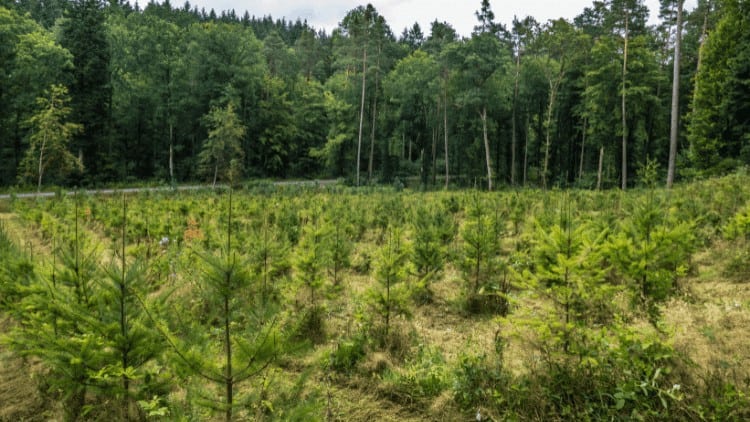Preserving nature, restoring soils and safeguarding biodiversity is essential—but calling it carbon removal is harmful.

The European Commission’s proposed Carbon Removal Certification Framework (CRCF) should have helped determine what constitutes valid carbon-dioxide removals in the European Union. But the draft certification, monitoring and accounting system has many shortcomings. A fatal flaw is the strong focus on the wrong types of removals, including ‘carbon farming’, gaining momentum in associated policy debates.
To be considered true carbon removal, a process needs to remove CO2 directly from the atmosphere and store it permanently—at the very least for two centuries. Carbon farming is an extremely broad and volatile concept, covering very different types of nature-based activities (mainly storing carbon in vegetation and soils) with very different estimated durations of storage lumped together. All lead to carbon being stored temporarily in carbon sinks vulnerable to human and natural disturbances.
Major benefits
Carbon farming is something of a misnomer because the real benefits of nature-based practices are to the broader environment and society, as well as landowners. Close-to-nature forestry practices not only safeguard biodiversity but also increase the resilience of forests and help protect against pests. Soils with higher carbon content are better at retaining water (protecting against droughts and floods), suffer less erosion, improve biodiversity, greatly reduce the need for pollution-intensive fertilisers and enhance fertility. Such practices in general increase the capacity of our landscapes to withstand the ever-worsening impacts of the climate breakdown and can play a big adaptation role.
These are often referred to as ‘co-benefits’ by policy-makers and stakeholders keen to foreground the climate perspective. But that is the wrong way around: the ability to sequester carbon is the co-benefit, while these myriad environmental, social and economic benefits are more than reason enough to incentivise such good stewardship.
While carbon farming sounds like a no-regrets option with plenty of winners, there is a risk that no one wins at all if approached from a climate-centric perspective. Carbon credits from carbon farming are not a good tool for tackling the climate crisis, for three reasons.
Carbon sequestration
First, take soil carbon sequestration—the reversing of a historic loss of carbon from soils due to soil degradation by intensive agriculture. Monitoring, verifying and reporting is extremely expensive and comes with huge uncertainties. We cannot accurately measure how much is being sequestered and we will not know if and when carbon leaks back into the atmosphere—let alone how much.
Anything that is certified as a removal risks being used to label products, companies or even the entire EU as ‘net zero’ or ‘climate neutral’. Using vulnerable carbon sinks in this way puts the union’s climate targets at risk, because the certified removals may exist only on paper or quickly seep back into the atmosphere, so the target is not achieved in the real world—with potentially catastrophic consequences.
Secondly, activities leading to temporary removals are already widely used to offset permanent emissions—claiming a false equivalence between climate-heating pollution that stays in the atmosphere for centuries and carbon stored merely for years or decades. This distracts corporations, consumers and policy-makers from addressing the climate impacts of the goods and services they respectively sell, buy and regulate. The climate crisis is acute—there is no time to waste on offsetting emissions.
Slowing down mitigation
Thirdly, these nature-based credits often cost less than reducing emissions, the pressing priority. Crediting carbon farming thus risks slowing down mitigation. The Intergovernmental Panel on Climate Change is clear on this: both removals and emissions reductions are needed, but as complements, not substitutes.
From the perspective of farmers and forest owners, certification as proposed by the commission risks being a double-edged sword. While they might receive some financial benefit after successfully (though not without burden and costs) proving that the carbon content in their biomass had increased, they would also need to assume responsibility (and potential financial liability) for any carbon re-released.
The risk of reversals for nature-based solutions, especially soils, is extremely high. These can be caused not only by changes in practices (even by future generations of farmers and land managers) but also by increasingly frequent natural disturbances, such as fires, droughts, flash floods, pests and invasive species. Such disturbances will be exacerbated by the climate crisis itself—compounding the risks for farmers. Moreover, a similar scheme in France has led to only around 60 per cent of funds reaching farmers—the rest mainly ended up in the pockets of intermediaries.
Squaring the circle
For once, a circle can be squared—by taking a step back from carbon credits for non-permanent removals (including carbon storage in products). These need exact quantification and long-term monitoring and someone has to be liable for any reversals.
Policy-makers need to think beyond markets and instead focus on a viable alternative—finance linked to activity rather than (questionable) results. The EU, its member states and the private sector can support farmers and foresters to adopt and maintain good practices for the environment and the climate.
This approach has many advantages. First, no quantification or estimation of carbon for highly reversible storage methods means no units can be used wrongly, such as for ‘greenwashing’ or artificially hitting EU targets. Secondly, no issuance of credits means no liability for farmers: if they change practices again, then they choose no longer to receive support. Finally, supporting best practices would not punish early movers (such as organic farmers or close-to-nature foresters) or farmers in geographic areas with less potential for carbon sequestration, while putting the right benefits in the spotlight.
Funding key
The key question remains funding. Buying carbon credits to compensate for permanent emissions (‘offsetting’) doesn’t help us address the climate crisis—but better alternatives exist.
From the private sector, revenues can derive from polluter-pays instruments (such as the EU Emission Trading System) and corporate contributions to climate action not associated with consequent ‘carbon-neutral’ claims. But restoring and protecting nature is, ultimately, a public good.
Public resources will thus be needed if the EU is to reach its environmental goals and bear its fair share of global efforts to tackle the biodiversity crisis and climate breakdown. Public funding can come from existing schemes—such as by ‘greening’ the Common Agriculture Policy—from public-procurement processes or from new streams to help reach the targets of the EU’s Nature Restoration Law or the upcoming Soil Health Law.
Creating junk removal credits just to attract funding through voluntary carbon markets will not help the EU or its farmers and forests. Political will and foresight is needed to prevent these mistakes being made.
Wijnand Stoefs is lead expert on carbon removals at Carbon Market Watch.

